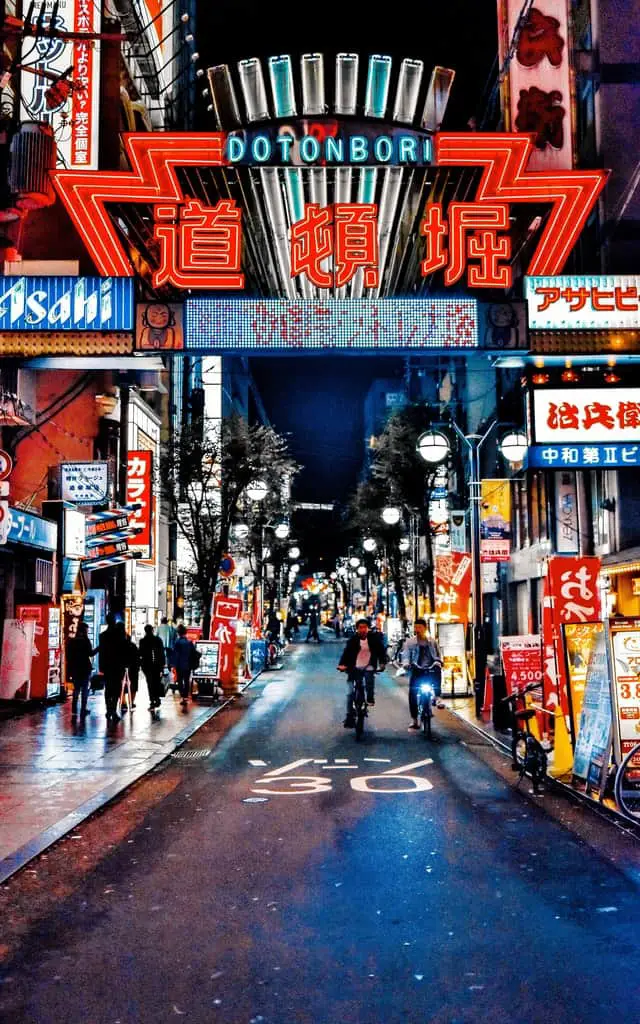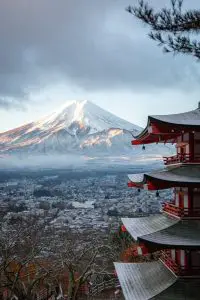Introduction
Developed in China, Gyaru fashion is a fashion subculture. It is the Japanese way of saying ‘gal,’ which translates to young woman or girl. It refers to anything that pertains to women, girls, or young women. The fashion of Gyaru was heavily influenced by western culture. According to Wikipedia, the late 1980s American drama series Baywatch inspired the creation of Gyaru fashion. People believe that the style was created and popularized by Pamela Anderson’s role in the drama series at the time. It is simply an exaggeration and signifies the American teenage girl culture in Japan. As the name suggests, Gyaru fashion focuses more on the West and goes against Japanese fashion norms.
A Gyaru is distinguished by their physical features such as tanned skin, bleached hair, expensive bags and clothing, and mini schoolgirl skirts. They are frequently seen in prominent Tokyo neighborhoods, such as Shibuya and Harajuku. While it can be quite challenging to see a Gyaru walking along; they move in a group called a Gyaru circle. However, there are also places in Tokyo where people who share this subculture gather in order to socialize and interact. As part of this culture, the Kogyaru fashion style was developed in the early 1990s. Although no one is certain how Gyaru fashion began, it didn’t take long for people to begin taking notice. Read this article for more details about Gyaru culture and history.
Societal Expression
This subculture is believed by many to have originated as a rebellion against Japan’s cultural beauty norms by girls who were unsatisfied with those norms. As a result, they established a fashion subculture in an effort to dismantle these norms and bring about change. Gyarus are simply striving for a more liberated society where girls may express their style freely. The phrase refers to allowing women to express their beauty in their own way without society judging their choices. Using Gyaru fashion, people were free to dress and behave as they wished without being constrained by any social or cultural norms.
Historically, Japan’s beauty standard was silky, pale, and white skin. This fashion subculture aimed to eliminate these standards and create new expressions of beauty. Therefore, Gyarus have tanned skin, which is what makes them recognizable. In order to become a part of the Gyaru community, one must always tan their skin. In light of this, being a Gyaru requires financial investment. The majority of people who identify themselves as Gyaru are wealthy students who desire to break away from social norms. This is also to provide a voice for those who are less fortunate in terms of beauty and fashion.
In Japan, people with tanned skin are typically associated with people who belong to the lower social strata, most of whom work under the sun for extended periods of time. This assumption is the result of the fact that most people work under the sun for extended periods.
The History of Gyaru Fashion
The problem with the Japanese beauty standard is that to be considered pretty in society, you need a pale, white complexion. The Gyarus seek to battle this and therefore make a statement by tanning their skins. The goal is to reform the established norm of society.
Gyaru culture began in the early 1990s due to a demand for change when the fashion industry responded to the demand for change, and produced the Gyaru fashion culture. Fashion magazines have continued to focus on the Gyaru culture and their various subcultures since then. Egg Magazine is a famous magazine focusing on Gyaru culture. Additionally, several fashion brands focusing on the Gyaru culture have emerged over the past few years. In most cases, however, these brands focus on engaging a specific subculture within Gyaru.
Gyaru Fashion in Modern Times
Although Gyaru was very popular when it was introduced, it soon lost its appeal. Today, its aesthetics and popularity continue to decline, and few understand why this is occurring. In an article published in Tokyo Fashion magazine, it was suggested that globalization could be a major contributing factor to this decline. It has taken over the Tokyo fashion districts where Gyaru-centered businesses once flourished, since it has paved the way for fast fashion brands to sell affordable clothing items internationally.
It is important to note, however, that the Gyaru culture is very expensive. Because of the constant need for tanning, consumers were able to explore new fashion ways without emptying their wallets when international fast fashion brands entered Japan. Since fast fashion brands also offer fashionable items that are reportedly the top trends in the Western fashion industry which was the primary purpose of Gyaru fashion, people didn’t see the need to purchase expensive clothes anymore.
Dying Enthusiasm for the Gyaru Fashion Culture
Some Gyaru businesses are closing down due to the declining demand for Gyaru fashion. However, there are still a number of Gyaru-centered businesses, although they are not as numerous as they were when the culture emerged. The fewer Gyaru businesses provide little to no opportunity for new Gyaru enthusiasts to try out the fashion.
Further, Gyaru culture has recently gained significant popularity. The reason for this is primarily due to Neo Gyaru, a subculture of Gyaru that is hardly visible today. Due to the fashion trend that has begun to blend with the crowd, Gyaru is no longer evident. Therefore, it is likely that you will only be able to distinguish a Gyaru from their peers by their makeup; beyond that, you will need to rely on their tanned skin in order to distinguish them. In light of the Gyarus’ acceptance of society’s beauty norms, their skin is becoming paler and whiter.
As a result, top Gyaru magazines such as Egg Magazine are also experiencing a decline in influence. Despite its popularity within the Gyaru community and enthusiasts reading it like a bible, this magazine stopped operating in 2016 due to low turnover to go digital. Its inability to adapt to change is also a major contributing factor to its decline. Gyaru followers and magazine readers were adversely affected by these heavy changes in the community and the loss of one of its top influences.
Gyaru Brands
In the 1990s, Gyaru gained a great deal of popularity. As a result, many business-minded individuals created a fashion brand addressing the demands of those who follow the Gyaru fashion trend specifically. As a department store known for catering to obscure and famous brands in Japan, Shibuya 109 was often a destination for fashion brands belonging to the Gyaru community.
In the years following this department store opened, most brands were able to sell their products and gain recognition in the fashion industry. The Gyaru brand was one of the brands that utilized Shibuya 109’s potential. They began obscure, but soon became some of the trendiest brands in the country. As a result, 109 became the birthplace of the Gyaru. Following that, however, many brands began to open stores throughout the country.
As part of this subculture, most brands set up pop-up stores at conventions and began digitizing their businesses so as to reach a wider audience. Additionally, some Gyaru clothing brands sold their items on popular online marketplaces such as Farfetch. Some of the most well known Gyaru clothing brands include:
- ANAP
- COCO LULU
- FIG & VIPER
- Galaxy
- MA*RS
- Egoist
- GOLDS Infinity
- DURAS
- Cecil McBee
Gyaru Fashion Subcultures
There are a number of subcultures that Gyaru has to offer, however, we will only discuss the most popular subcultures to give you a better understanding of how this fashion trend came to be.
KoGyaru
This subculture is also known as Kogal and is a Gyaru subculture that focuses on school girls. Specifically, KoGyaru means high school girls, and it is the first Gyaru subculture we know. In addition, it remains the most popular Gyaru subculture. An example of a KoGyaru would be Aiura Mikoto, who had thick colored hair that curled up. Her nails were long and decorative, as well as her phone. Another reason why she perfectly depicts the KoGyarus is her tanned skin. Today, the term refers to more than just the Gyaru community, but also a fashion trend.
Hime Gyaru
This subculture refers to a princess-like style, interpreted as Hime Gyaru. People usually associate it with Lolita because they share many similarities. Lolita, however, is entirely different, and its attire closely resembles a princess’s. People who practice Hime Gyaru fashion will purchase a tiara if necessary. Aside from their long nails, beehive hairstyle, and heavy makeup, they are also famous for their long nails. The clothing they wear only consists of lots of laces and frills, and they are bouncy. Their clothing colors are limited to white and pink, which indicates their femininity. Several brands still sell Hime Gyaru fashion outfits in Japan, so you should have no difficulty finding them. You may also find clothing with floral and gingham patterns.
The Kuro Gyaru
Lastly on our list of common Gyaru subcultures is Kuro Gyaru. They are quite popular, and their goal is to spread their fashion style throughout the world. This Gyaru subculture has maintained its roots throughout its history. Kuro Gyaru are named for their dark tans, but you can also recognize them for their large headpieces. Kuro Gyaru are known for showing more skin than their Hime Gyaru counterparts. They also wear many faux leopard prints with their clothing.
Final Thoughts
Japan is known for its many fashion subcultures. However, a few have survived and are still prominent today. One such fashion subculture is Gyaru fashion, which originated in the 1970s and is still popular today. In addition to its expressiveness, this fashion style serves as a guide for new Gyaru enthusiasts to explore the different Gyaru subcultures. It owes its popularity to its expressiveness.







